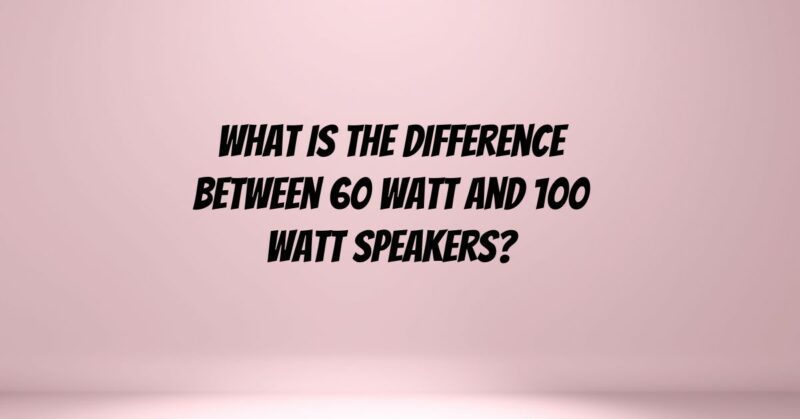When it comes to speakers, wattage is a crucial specification that can greatly impact their performance and suitability for various applications. The difference between 60-watt and 100-watt speakers lies in their power handling capacity, which affects their output, volume, and suitability for different audio setups. In this article, we’ll explore the distinctions between these two speaker types to help you make an informed decision when choosing the right speakers for your audio needs.
Wattage Explained:
Before diving into the differences, it’s essential to understand what speaker wattage represents. Wattage, in the context of speakers, refers to the power handling capacity or the amount of electrical power a speaker can safely handle without distortion or damage. It’s typically specified as the RMS (root mean square) power rating, which indicates a continuous, sustained power level.
Key Differences Between 60-Watt and 100-Watt Speakers:
Power Handling Capacity:
The most apparent difference is the power handling capacity:
60-Watt Speakers: These speakers can handle up to 60 watts of continuous power without distortion or damage. They are ideal for smaller rooms, casual listening, and lower-volume applications.
100-Watt Speakers: These speakers can handle up to 100 watts of continuous power, providing greater headroom and output capabilities. They are suitable for larger rooms, higher-volume listening, and more demanding audio setups.
Volume and Output:
The wattage directly impacts the speaker’s ability to produce sound at higher volumes. 100-watt speakers generally have the potential to deliver louder and more impactful sound than 60-watt speakers, making them suitable for larger spaces and situations where high volume is desired.
Dynamic Range:
100-watt speakers typically have a wider dynamic range, allowing them to handle sudden peaks and transients in audio content more effectively. This results in better clarity and detail, especially at higher volumes.
Suitability for Different Applications:
60-Watt Speakers: These speakers are often a good choice for home offices, bedrooms, or small living spaces. They excel in scenarios where moderate volume levels suffice and are suitable for background music or casual listening.
100-Watt Speakers: These speakers are versatile and can adapt to a broader range of applications. They are well-suited for larger rooms, home theaters, parties, and situations where you want to crank up the volume without sacrificing sound quality.
Amplifier Requirements:
It’s essential to pair these speakers with an amplifier or receiver that can provide the necessary power. A 60-watt amplifier may be sufficient for 60-watt speakers, while 100-watt speakers may benefit from a more robust amplifier in the 80-120-watt range.
Choosing the Right Speaker for Your Needs:
When deciding between 60-watt and 100-watt speakers, consider the following:
The size of your listening space.
Your listening habits and volume preferences.
The type of audio content you enjoy.
Your budget for both speakers and amplification.
Ultimately, the choice depends on your specific requirements and the listening experience you aim to achieve. Whether it’s enjoying background music in a cozy room or creating a cinematic audio experience in a larger space, selecting the right wattage for your speakers ensures you get the most out of your audio setup.

